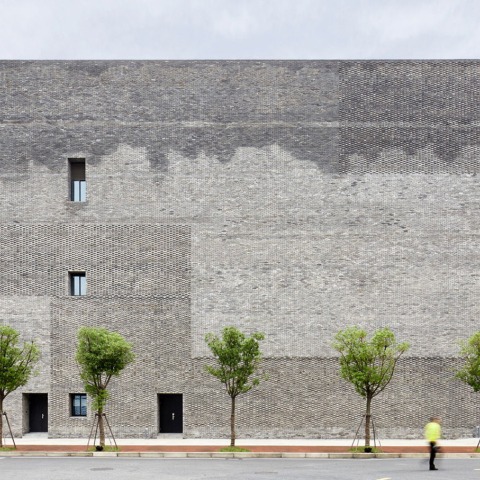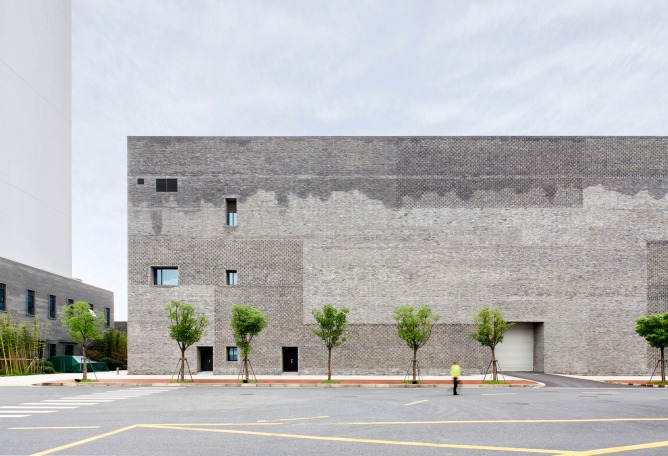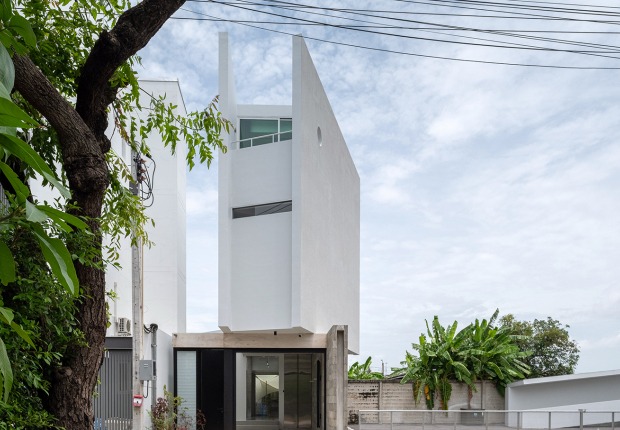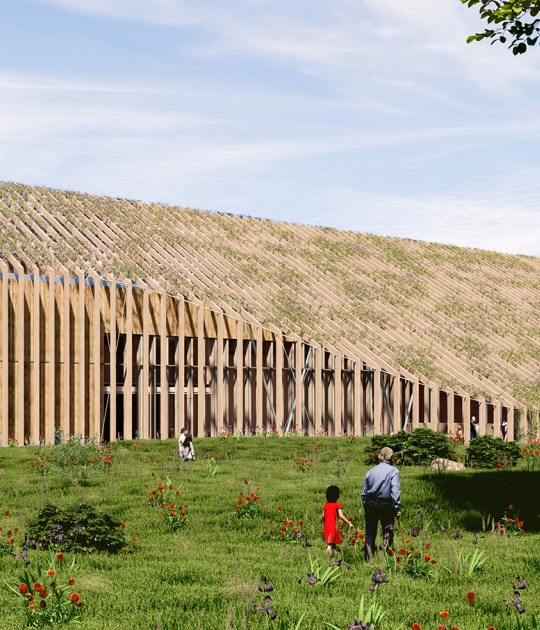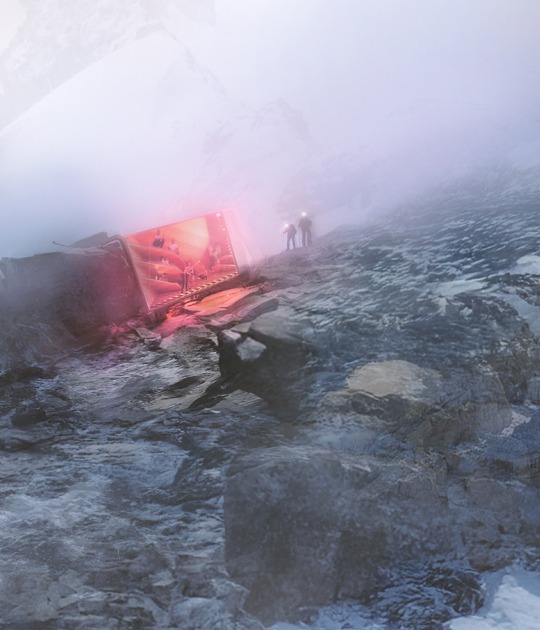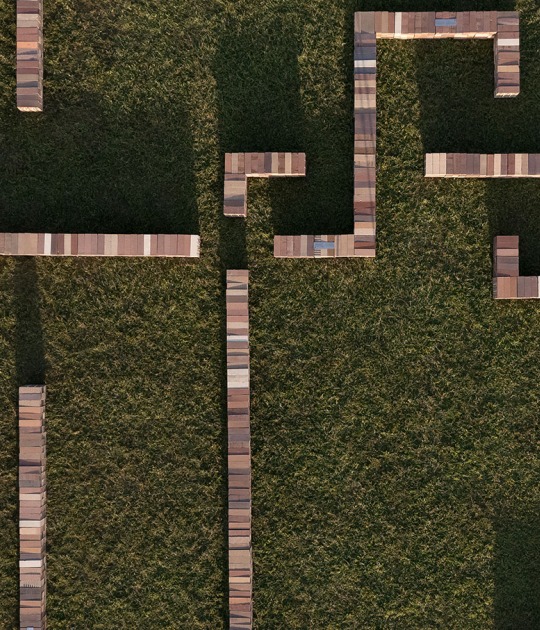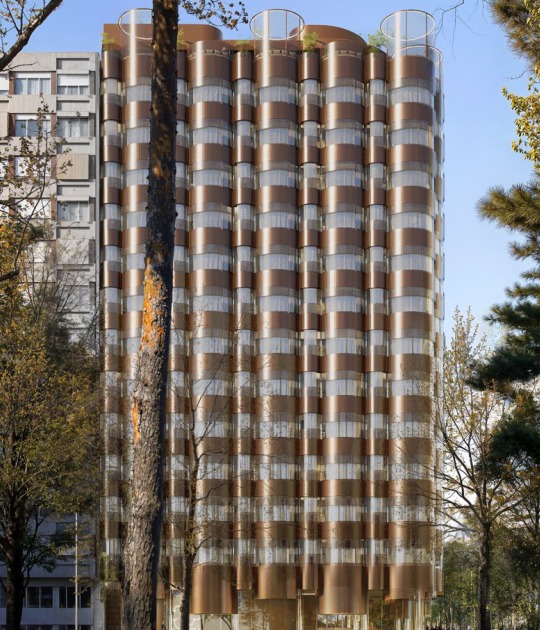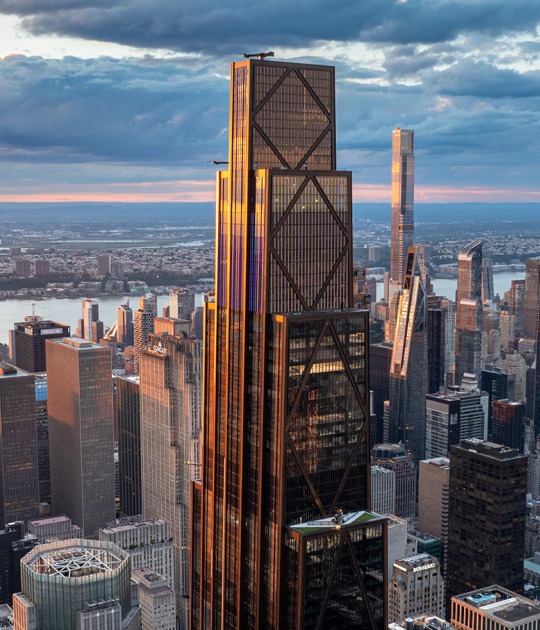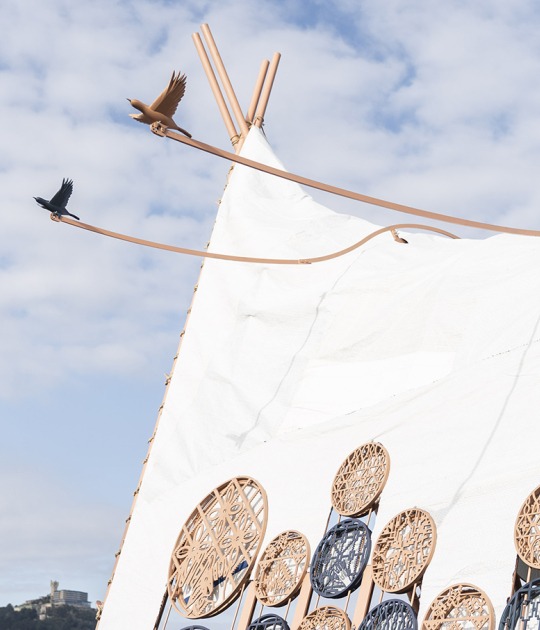The 32,400-square-metre complex comprises open office spaces for 800 people, including meeting rooms, lounges, a showroom, a training center, factories, warehouses, and a research facility. This aided by the surrounding landscape and several courtyards both inside and outside the complex, also ensures that the blocks are unimposing and human in scale.
At the north-east end of the site, opposite the office towers, the podium rises in height to create a "fortress-like" boundary that contains a research facility. Its impermeable look is intended to reflect the private work conducted there.
Other notable elements in the Schindler City campus include a tall, slender white tower, which functions as a lift shaft to test the company's new elevators.
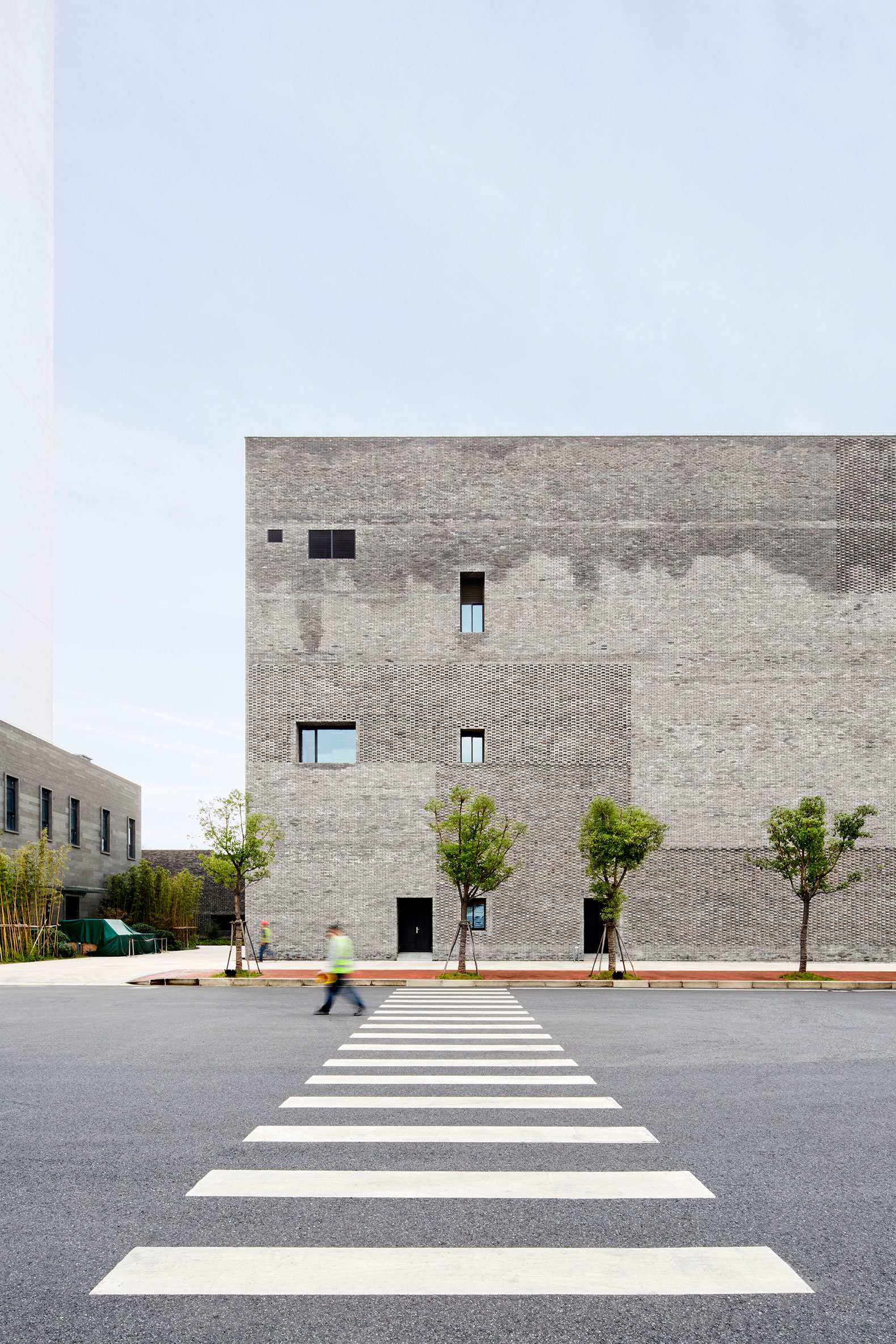
Schindler City Headquarters by Neri&Hu. Photograph by Annika Feuss.
Project description by Neri & Hu
Neri&Hu envisions a 32,400 sqm headquarters for leading elevator manufacturer Schindler, as part of a new corporate master plan including offices, showrooms, factories, warehouses, and research facility. Situated in the developing industrial area of Jiading, just outside of Shanghai’s city center, Neri&Hu sought to overcome the sense of isolation and vastness that characterizes industrial facilities by emphasizing the integration of human-scale landscape elements and public spaces throughout the project.
The resulting architectural proposal is two-part, a continuous base at ground level and floating lightboxes above. Challenging the typical office block typology of individual buildings loosely bound by greenery or paths, the architecture absorbs these elements into a unified podium that not only inextricably ties architecture to the landscape but makes seamless connections between all the various programs. These functions include shared amenities such as a 600 pax capacity canteen, an auditorium seating 200, several lounges and cafes, over 7,000 sqm of occupiable gardens, and a 300m long passageway featuring Schindler’s own moving walks to link it all together.
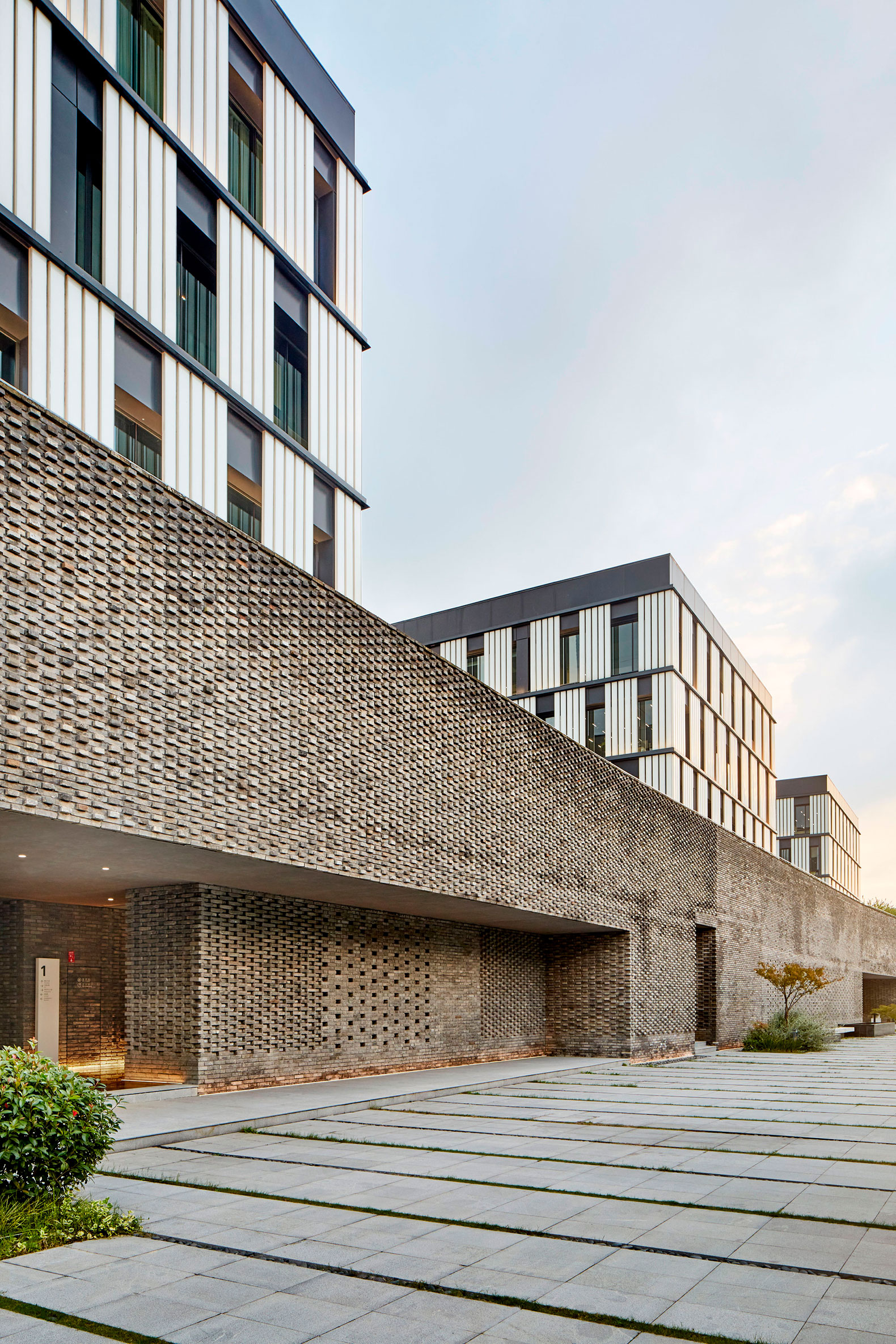
Schindler City Headquarters by Neri&Hu. Photograph by Annika Feuss.
At the north-east end of the site, the base podium rises and grows in height to form the Research & Development facility. This fortress-like enclosure, with its shifting volumes, is dynamic yet solid, representing the innovative if not private nature of the work conducted here. At the opposing end of the podium, within three glass boxes, 800 employees occupy office spaces on four levels above, including meeting rooms, lounges, archives, a showroom, and a training center. Each of the three buildings features a multi-story atrium that encourages visual and physical interactions between the different departments on each floor.
The two architectural elements that comprise the project are not only functionally unique but expressed in vastly different material palettes. Aligned with the client’s mission to engage with local cultures, the podium featuring gray brick, common building material in China, is a nod towards the material heritage of the project’s locale. For the glass boxes above, translucent channel glass sections, interspersed with white metal-framed window slots, compose a building façade that is bright, minimal, and elegant – a subtle reference to the company’s Swiss background. The resulting design is both firmly grounded in local cultures and building traditions while celebrating the innovative and forward-thinking corporate culture of Schindler.
